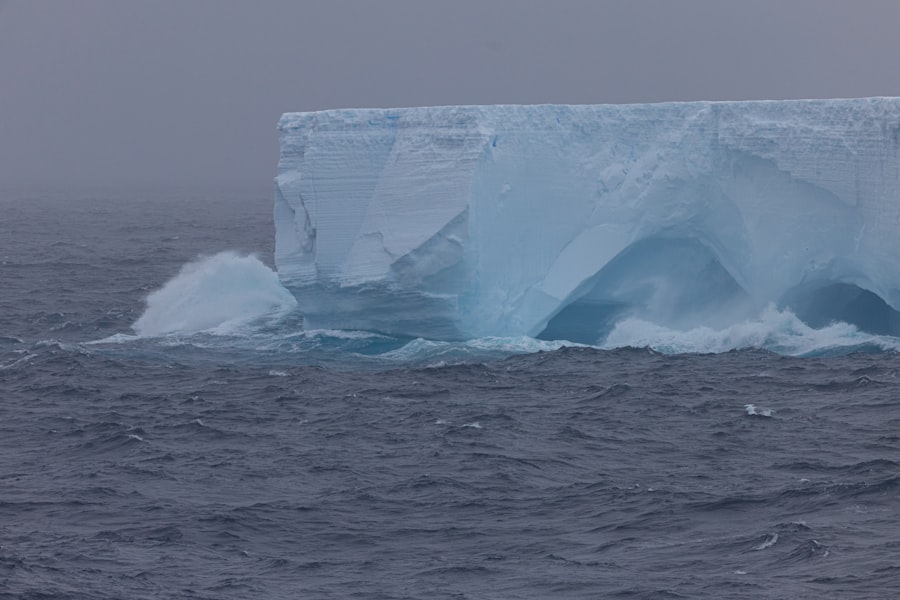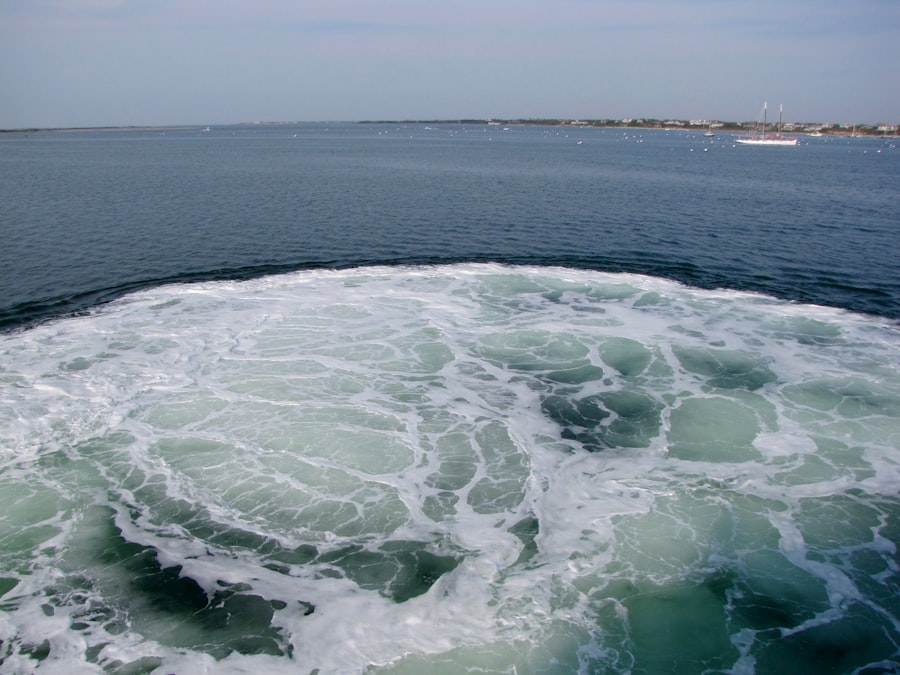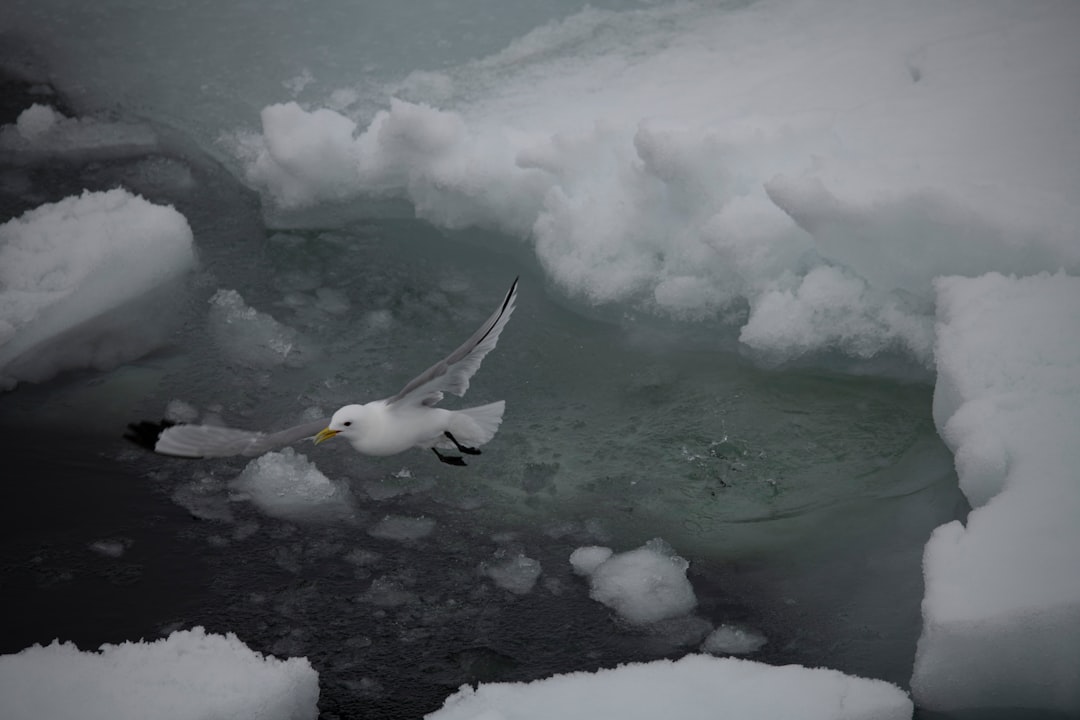The Drake Passage, a body of water that separates South America from Antarctica, is renowned for its tumultuous seas and unpredictable weather. Stretching approximately 800 kilometers, it serves as a critical gateway for vessels venturing to the southernmost continent. Named after the English explorer Sir Francis Drake, who navigated these waters in the late 16th century, the passage has become synonymous with both adventure and peril.
Its unique geographical position allows for the confluence of the Atlantic and Pacific Oceans, creating a dynamic environment that can shift from calm to chaotic in a matter of moments. For explorers, scientists, and tourists alike, the Drake Passage represents both a challenge and an opportunity. It is often the first taste of the Antarctic experience, where the beauty of icebergs and wildlife contrasts sharply with the dangers posed by the sea.
The passage is not merely a route; it is a rite of passage for those seeking to explore the last great wilderness on Earth. As vessels navigate its waters, they are reminded of nature’s raw power and the respect it demands from those who dare to traverse it.
Key Takeaways
- The Drake Passage is a treacherous body of water between South America and Antarctica, known for its unpredictable and harsh weather conditions.
- Navigating the Drake Passage presents numerous challenges for expedition ships, including strong winds, high waves, and icy conditions.
- Expedition ships in the Antarctic are at risk of getting frozen in ice, leaving the crew stranded in the harsh and isolated environment.
- The crew’s experience of being stranded in the Antarctic is a test of resilience and resourcefulness in the face of extreme conditions.
- Surviving the harsh Antarctic conditions requires careful planning, teamwork, and the ability to adapt to the unpredictable environment.
The Challenges of Navigating the Drake Passage
Navigating the Drake Passage is fraught with challenges that test even the most seasoned mariners. The unpredictable weather patterns can lead to sudden storms, with waves reaching heights of up to 15 meters. These conditions can make sailing treacherous, as vessels are tossed about like toys in a bathtub.
The strong currents and shifting winds further complicate navigation, requiring constant vigilance and skill from the crew. For many, the passage is a formidable barrier that must be crossed with caution and respect. Moreover, the isolation of the Drake Passage adds another layer of difficulty.
Communication can be sporadic, and in emergencies, time becomes a critical factor. The psychological strain on crew members and passengers can be significant, as they grapple with the reality of being at the mercy of nature.
This combination of physical and mental challenges makes navigating the Drake Passage an experience that is both exhilarating and daunting.
The Expedition Ship: Frozen in the Antarctic

In an unexpected turn of events, an expedition ship found itself frozen in the icy grip of Antarctica. This vessel, designed for exploration and adventure, became an unintentional monument to nature’s might. As ice encased its hull, the ship’s crew faced an uncertain fate.
The vessel had been equipped with state-of-the-art technology and amenities to ensure a comfortable journey through the harshest environments on Earth. However, no amount of preparation could fully account for the whims of the Antarctic climate. The ship’s predicament served as a stark reminder of how quickly circumstances can change in such an unforgiving landscape.
What began as an exciting expedition transformed into a struggle for survival as ice enveloped the ship, rendering it immobile. The crew’s training and experience were put to the test as they adapted to their new reality, relying on their skills and resourcefulness to navigate this unforeseen challenge.
The Crew’s Experience of Being Stranded
| Aspect | Metrics |
|---|---|
| Duration of Stranding | 3 months |
| Number of Crew Members | 10 |
| Supplies Remaining | 50% food, 30% water |
| Communication with Outside World | Limited to distress signals |
| Psychological Impact | High stress and anxiety |
Being stranded in Antarctica was an experience that profoundly affected each member of the crew. Initially filled with excitement and anticipation for their journey, they soon found themselves grappling with fear and uncertainty. The isolation of their situation weighed heavily on their spirits as they faced long days and nights trapped within the confines of their frozen vessel.
Communication with the outside world became limited, heightening their sense of vulnerability. As time passed, camaraderie among the crew members grew stronger. They banded together to maintain morale and support one another through this challenging ordeal.
Shared stories, laughter, and teamwork became essential tools for coping with their predicament. Each day brought new challenges, but also opportunities for growth and resilience as they learned to adapt to their circumstances. The experience transformed them from mere colleagues into a tight-knit family united by a common struggle against nature.
Surviving the Harsh Antarctic Conditions
Surviving in Antarctica is no small feat, especially when stranded in a frozen ship surrounded by relentless ice and frigid temperatures. The crew quickly realized that their survival depended on resourcefulness and ingenuity. They had to ration supplies carefully, ensuring that food and water lasted as long as possible while maintaining their strength and morale.
Every decision became crucial as they navigated the delicate balance between sustenance and survival. In addition to managing resources, the crew had to contend with the harsh environmental conditions that characterized Antarctica. Bitter cold temperatures could drop well below freezing, making even simple tasks challenging.
They learned to layer clothing effectively to retain warmth while also finding ways to stay active within the confines of their ship. The psychological toll of isolation was significant; however, they found solace in nature’s beauty outside their frozen prison. The stunning landscapes and wildlife served as reminders of why they had embarked on this journey in the first place.
Rescuing the Stranded Ship

The rescue operation for the stranded ship was a complex endeavor that required careful planning and coordination among various agencies. As news of their plight spread, multiple organizations mobilized resources to assist in their recovery. Icebreakers were dispatched to navigate through treacherous waters and reach the trapped vessel.
The logistics involved in such an operation were daunting; weather conditions had to be monitored closely to ensure safe passage for rescue teams. As rescuers approached, hope surged among the crew members who had endured weeks of uncertainty. The sight of an icebreaker breaking through the icy expanse was a beacon of relief after days spent in isolation.
However, challenges remained even as help arrived; navigating through thick ice required skill and precision. The crew’s training proved invaluable as they worked alongside rescuers to facilitate a safe extraction from their frozen surroundings.
Lessons Learned from the Antarctic Challenge
The experience of being stranded in Antarctica imparted invaluable lessons to both the crew and those who followed their story. One significant takeaway was the importance of preparation and adaptability in facing unforeseen challenges. Despite meticulous planning, nature can be unpredictable; thus, flexibility becomes essential when navigating unexpected circumstances.
Additionally, this ordeal highlighted the significance of teamwork and communication in overcoming adversity. The bonds forged among crew members during their time together became a source of strength that helped them endure their trials.
Their shared experiences fostered a sense of unity that transcended individual fears and anxieties. Ultimately, they emerged from this challenge not only as survivors but also as individuals transformed by their journey through one of Earth’s most extreme environments.
The Impact of Climate Change on Antarctic Expeditions
As explorers continue to venture into Antarctica, they face an increasingly pressing issue: climate change. The effects of global warming are evident in this fragile ecosystem, with rising temperatures leading to melting ice caps and shifting wildlife patterns. These changes pose significant challenges for future expeditions as traditional routes may become less predictable or even impassable due to altered sea conditions.
Moreover, climate change raises ethical questions about human activity in such pristine environments. As explorers seek to understand and document these changes, they must also consider their impact on local ecosystems and wildlife populations. Balancing exploration with conservation becomes paramount as scientists strive to study climate change while minimizing their footprint on this delicate landscape.
The Future of Antarctic Exploration
The future of Antarctic exploration is poised for transformation as advancements in technology and growing awareness of environmental issues shape new approaches to research and adventure. Innovations such as autonomous drones and remote sensing equipment are revolutionizing how scientists study this remote region, allowing for more comprehensive data collection without disturbing fragile ecosystems. Furthermore, there is a growing emphasis on sustainable practices within expedition planning.
As awareness about climate change increases, explorers are becoming more conscious of their environmental impact and are seeking ways to minimize it during their journeys. This shift towards responsible exploration reflects a broader understanding that preserving Antarctica’s unique environment is essential for future generations.
The Resilience of the Crew and Ship
The resilience displayed by both the crew and their ship during this harrowing experience serves as a testament to human spirit and ingenuity in the face of adversity. Despite being trapped in one of Earth’s most inhospitable regions, they demonstrated remarkable adaptability and resourcefulness throughout their ordeal. Their ability to work together under pressure showcased not only their individual strengths but also highlighted the power of collaboration in overcoming challenges.
The ship itself became a symbol of endurance amidst adversity; designed for exploration yet tested by nature’s fury, it weathered storms both literal and metaphorical during its time frozen in ice. This experience reinforced the notion that resilience is not solely about survival but also about growth—both for individuals facing hardship and for vessels navigating unpredictable waters.
Reflecting on the Antarctic Adventure
Reflecting on this Antarctic adventure reveals profound insights into human resilience, teamwork, and our relationship with nature. The challenges faced by the crew while navigating treacherous waters serve as reminders that exploration comes with inherent risks but also immense rewards—both personal growth and scientific discovery await those willing to embrace uncertainty. As explorers continue to venture into Antarctica’s icy embrace, they carry forward lessons learned from past experiences like this one—lessons about preparation, adaptability, sustainability, and respect for our planet’s delicate ecosystems.
Ultimately, these adventures remind humanity not only of its capacity for endurance but also its responsibility to protect these pristine environments for future generations to explore and cherish.
In recent news, a ship attempting to navigate the notoriously challenging Drake Passage found itself frozen amidst the icy waters, highlighting the unpredictable nature of this treacherous route. For those interested in learning more about the geographical and historical significance of the Drake Passage, you can explore a related article on the topic by visiting MyGeoQuest. This resource provides valuable insights into the challenges faced by explorers and modern-day navigators alike when traversing this formidable stretch of ocean.
WATCH NOW! Drake Passage: Earth’s Deadliest Waters Revealed
FAQs
What is the Drake Passage?
The Drake Passage is the body of water between the southern tip of South America and the northern tip of the Antarctic Peninsula. It is known for its rough seas and challenging sailing conditions.
Why is the Drake Passage known for its extreme weather conditions?
The Drake Passage is known for its extreme weather conditions due to the convergence of the cold Antarctic air and the warmer air from the north. This creates strong winds and rough seas, making it one of the most challenging maritime routes in the world.
What is a “Drake Passage ship frozen”?
A “Drake Passage ship frozen” refers to a ship that has become stuck or trapped in ice while navigating through the Drake Passage. This can occur due to the extreme cold temperatures and the presence of icebergs in the area.
How common is it for ships to become frozen in the Drake Passage?
While the Drake Passage is known for its challenging conditions, it is relatively uncommon for ships to become completely frozen in the area. However, ships may encounter ice and freezing conditions that can impact their ability to navigate through the passage.
What are the dangers of a ship becoming frozen in the Drake Passage?
The dangers of a ship becoming frozen in the Drake Passage include the risk of being trapped in ice for an extended period, which can lead to issues with supplies, navigation, and potential damage to the ship. Additionally, the extreme weather conditions in the area can pose a threat to the safety of the crew and passengers on board.
